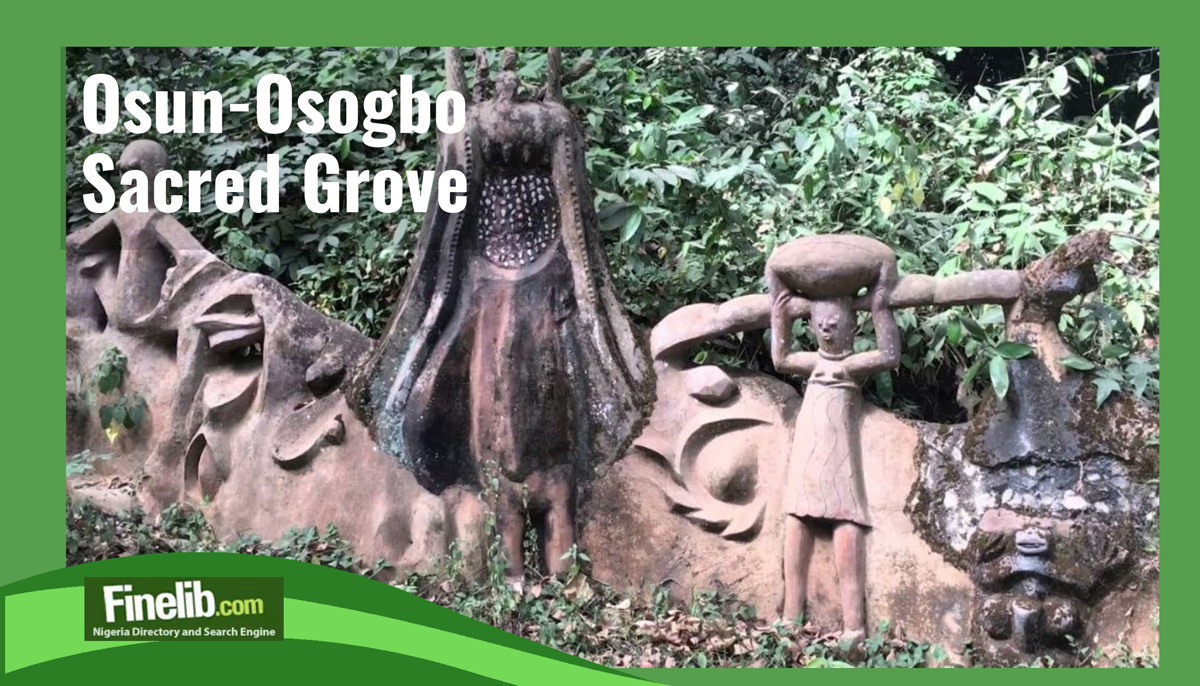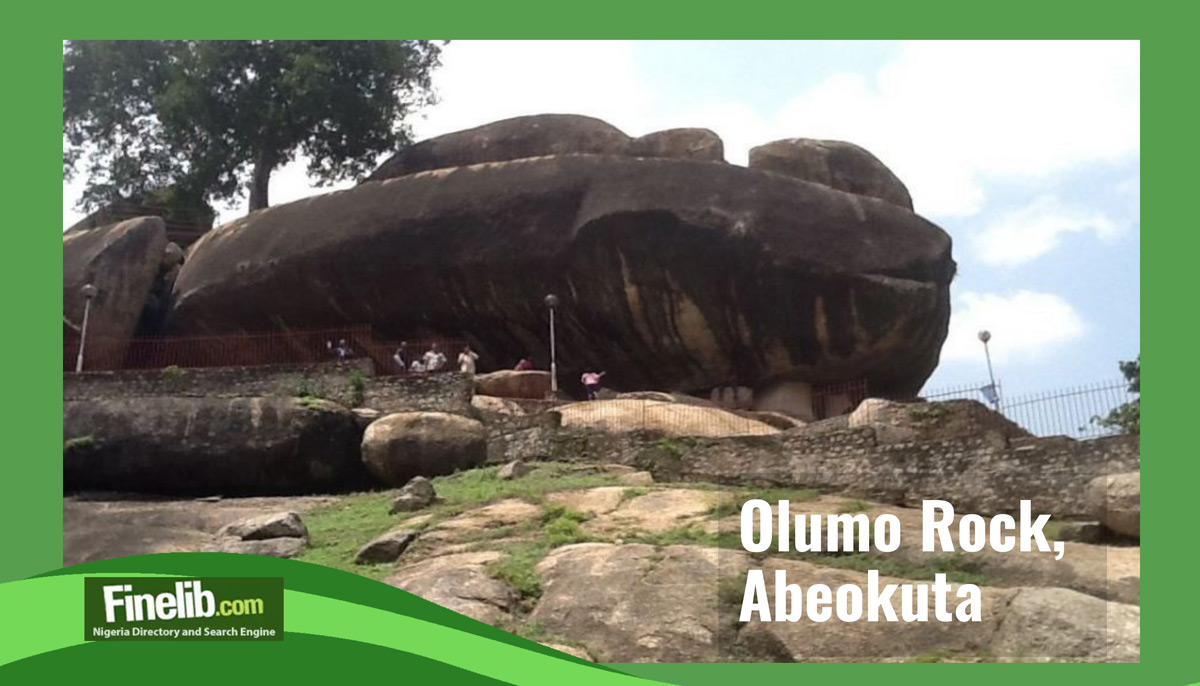Exploring the Osun-Osogbo Sacred Grove: A Testament to Yoruba Culture and Tradition

Nestled on the outskirts of Osogbo, Nigeria, the Osun-Osogbo Sacred Grove stands as a testament to Yoruba culture and tradition. This ancient forest encompasses the last remnants of the primary high forest in southern Nigeria.
It's also a revered site dedicated to Osun, the goddess of fertility in Yoruba mythology. The grove had special recognition from UNESCO in 2005. Worshipers of the Yoruba faith consider it to be of great significance. It also carries value for Yoruba individuals who have migrated from their origin.
History and Significance
The Osun-Osogbo Sacred Grove has a rich history spanning several centuries. It was once a widespread practice among the Yoruba people to establish sacred groves near their settlements, preserving areas of intact forest for ritual purposes.
These groves served as important cultural and spiritual spaces, embodying the interconnectedness between humans and nature in Yoruba cosmology.
Over time, many of these sacred groves disappeared or diminished in size, making the Osun-Osogbo Sacred Grove a rare and precious survivor. As the largest of its kind, the forest holds immense cultural and historical value, serving as a living representation of Yoruba sacred groves and their reflection of Yoruba cosmology.
The Grove's Features and Layout
Encompassing an area of 75 hectares, the Osun-Osogbo Sacred Grove is a sprawling landscape of undisturbed forest. The Osun River intersects the grove, considered the spiritual abode of the river goddess Osun. Along the riverbanks and throughout the forest, visitors can discover forty shrines, sculptures, and artworks dedicated to Osun and other Yoruba deities.
The grove is divided into five main sections, each devoted to different Yoruba deities, and features nine worship points along the river. These worship points serve as specific locations for Yoruba worshippers to engage in spiritual practices, reinforcing their connection with the divine and the natural world.
Suzanne Wenger and the New Sacred Art Movement
In the 20th century, the Osun-Osogbo Sacred Grove experienced a revival thanks to the efforts of Suzanne Wenger, an Austrian artist, and Yoruba priestess.
Wenger was pivotal in developing the New Sacred Art movement, which aimed to protect and restore the grove. By collaborating with local artists, Wenger breathed new life into the sacred site, incorporating modern sculptures that reinforced the links between the Yoruba people and their ancestral spirits.
Wenger's dedication to the grove earned her the "Adunni Olorisha" title and solidified her position as a custodian of Yoruba culture. Her contributions transformed Osogbo into a vibrant hub of artistic activity and sparked a renaissance of Yoruba traditional art.
Annual Osun-Osogbo Festival
One of the most significant events at the Osun-Osogbo Sacred Grove is the annual Osun-Osogbo Festival. This two-week-long celebration takes place in August and attracts thousands of Osun worshippers, spectators, and tourists worldwide.
The festival serves as a cultural reunion, bringing together the people of Osogbo to honor their ancestors and pay homage to the goddess Osun.
The festival is a vibrant display of Yoruba traditions, featuring various rituals and ceremonies. It begins with the traditional cleansing of Osogbo, known as "Iwopopo," followed by the lighting of the sacred sixteen-point lamp called "Ina Olojumerindinlogun."
The crowns of past rulers, the Ataojas of Osogbo, are also assembled in a ceremony called "Iboriade" to receive blessings. The festival's highlight is the procession to the shrine in the sacred grove, accompanied by drumming, dancing, recitation of praise poetry, and the presentation of offerings to Osun.
Conservation Challenges and Efforts
Despite its cultural and historical significance, the Osun-Osogbo Sacred Grove faces several modern challenges. The rapid urbanization of Osogbo puts pressure on land use surrounding the grove, threatening its integrity. Additionally, the pollution of the Osun River due to unregulated mining activities in nearby areas poses a significant risk to the ecosystem.
The Osogbo community and Nigerian heritage authorities have proactively addressed these challenges. Efforts include:
-
Raising awareness through community activities.
-
Implementing conservation management plans.
-
Allocating more funds from the annual festival towards conservation work.
Regular river cleanings have improved water quality, and initiatives to regenerate and replant trees and shrubs have enhanced the biodiversity of the grove.
Tourism and Cultural Relevance
The Osun-Osogbo Sacred Grove is vital in Nigeria's tourism sector, attracting visitors from within and around the world. Its cultural significance and unique blend of natural beauty and artistic expression make it a captivating destination for those interested in Yoruba culture and spirituality.
Moreover, the festival serves as a unifying force within the Osogbo community, bringing together people of different social, economic, religious, and political backgrounds to celebrate their shared heritage.
The grove is a thriving heritage that preserves Yoruba traditions and indigenous knowledge systems for present generations and the Yoruba diaspora.
Activities at The Site
The Osun-Osogbo Sacred Grove, a UNESCO World Heritage Site in Nigeria, offers a range of activities that allow visitors to immerse themselves in its natural beauty and cultural significance. Here are some actions you can enjoy at the sacred grove:
1. Guided Tours: Take a guided tour of the grove to learn about its history, cultural significance, and associated deities. Knowledgeable guides can provide insights into the rituals, sculptures, and artwork found within the grove.
2. Nature Walks: Explore the serene surroundings of the grove by taking a leisurely nature walk. Enjoy the lush vegetation, ancient trees, and peaceful atmosphere as you stroll along the trails.
3. Picnicking: Find a scenic spot within the grove and picnic. Bring along some delicious local snacks or a packed lunch to enjoy amidst the natural beauty of the surroundings.
4. Photography: The Osun-Osogbo Sacred Grove offers numerous photo opportunities. Capture the vibrant sculptures, architectural features, and lush greenery to preserve your memories of this unique place.
5. Cultural Performances: On special occasions or during festivals, the sacred grove comes alive with traditional performances, dances, and music. Check the local calendar to see if any events are happening during your visit.
6. Shopping: The grove has small markets for local crafts, artworks, and traditional clothing. Support local artisans and take home a unique souvenir.
7. Relaxation: Find a quiet spot within the grove to sit, meditate, or relax. The tranquil atmosphere and spiritual aura make it a perfect place to unwind and find inner peace.
Remember to respect the sacred nature of the grove, follow any rules or guidelines provided by the authorities, and be mindful of the environment. Please maximize your time at the Osun-Osogbo Sacred Grove by exploring its intriguing past and mesmerizing natural landscape.
How to Get There
Getting to the Osun-Osogbo Sacred Grove, a UNESCO World Heritage Site in Nigeria, is relatively easy. Here are the general steps to help you get there:
1. By Air: The closest major airport to the Osun-Osogbo Sacred Grove is the Murtala Muhammed International Airport in Lagos. From there, you can fly to Ibadan Airport or Akure Airport, which is relatively close to Osogbo.
2. By Road: Osogbo is well connected and can be reached from major cities in Nigeria. If you are coming from Lagos, you can take the Lagos-Ibadan Expressway and head towards Osogbo. If you are coming from Ibadan, you can take the Ibadan-Ife Expressway and proceed to Osogbo.
3. Local Transportation: Once you reach Osogbo, you can hire a taxi or public transportation to contact the Osun-Osogbo Sacred Grove. Ask for local directions or use a reliable navigation app to locate the site.
4. Entrance and Guided Tours: The Osun-Osogbo Sacred Grove is open to visitors, and the site has an entrance fee. It is essential to check the visiting hours and any restrictions before your visit. Guided tours are available at the site, providing detailed information about the grove's history, cultural significance, and the associated deities.
5. Safety Precautions: As with any travel, it is essential to take necessary safety precautions. Ensure you have travel insurance, stay hydrated, and bring sun protection, as the weather can be hot. You should also respect the sacred nature of the grove, follow any rules or guidelines provided by the authorities, and be mindful of the environment.
Remember to plan your visit, check the current situation, and consider the local customs and practices. The Osun-Osogbo Sacred Grove is a unique cultural site, and visiting it can be a rewarding experience for those interested in Nigerian heritage and spirituality.
Conclusion
The Osun-Osogbo Sacred Grove is a remarkable testament to Yoruba culture and tradition. Its preservation and revival through the efforts of individuals like Suzanne Wenger have ensured that this sacred site remains a vibrant hub of spirituality and artistic expression.
The grove offers a sight to behold with its enchanting forests, shrines, and sculptures attracting many visitors. Visitors have the opportunity to attend the Osun-Osogbo Festival, held yearly. One can educate themselves about the Yoruba culture using this method.
The grove's recognition as a UNESCO World Heritage Site highlights its global significance and underscores the need for continued efforts to protect and celebrate this invaluable cultural landscape.




